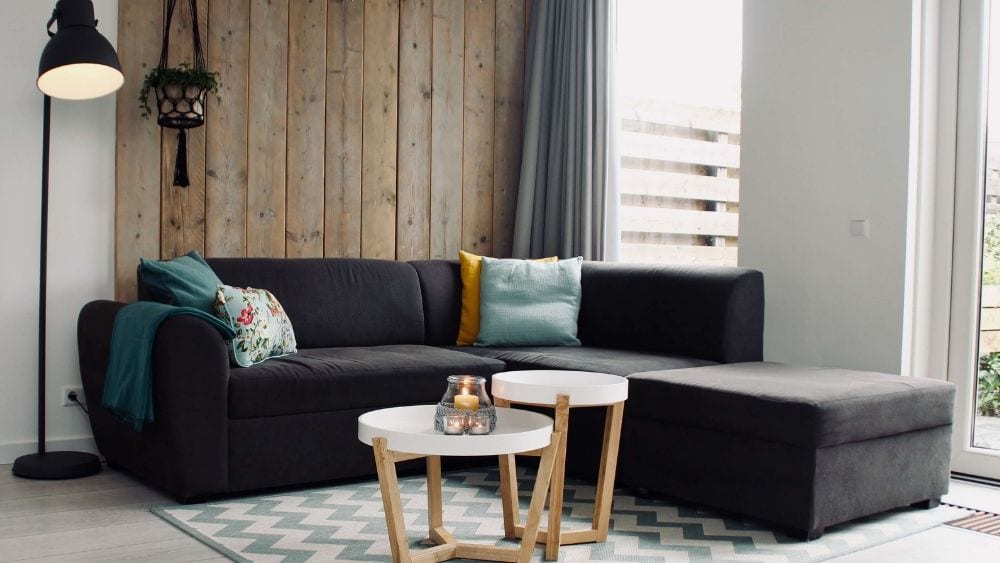
In our third and final (for now) article in this series about interior design styles, we’ll be covering styles of the 20th century and beyond, including everything from Art Nouveau to contemporary. These days, interior design is very mix-and-match and includes elements from many or all of the styles in this series. And you don’t have to work with an interior designer to get these styles in your home. We’re living in interesting times!
Art Nouveau (1890 – 1910)
Art Nouveau was inspired by the natural world and features curving lines and plant and floral motifs. Other common elements include stained glass windows, oriental rugs and wrought iron.
Asian (1900s – Present)
While there are many different Asian interior design styles, in the West we tend to lump them under one umbrella term. In this case, Asian most often refers to Chinese or Japanese design (which are very different from each other but share some common elements). Chinese interior design uses ornate patterns, dark colors and red and gold fabrics and paints. Older Japanese design does, too, but modern Japanese design is synonymous with minimalism and simplicity, natural materials and geometric patterns. In a contemporary context, “Asian-style” means striking shapes and clean, sleek lines.
Colonial Revival (1905 – Present)
Colonial Revival is a uniquely North American style of architecture and design. Drawing on Georgian and neoclassical styles, it borrowed (or revived) certain elements of the architecture, gardens and interior design of American colonial architecture. It definitely set the stage for further mixing and matching! Popular furniture of this style includes high four-poster canopy beds and Colonial Windsor chairs. Light-colored walls, mahogany furniture and traditional-themed fabrics are also common. This style achieved its greatest popular during World War I and World War II, and many elements are still found in homes today.
Art Deco (1920s – 1960s)
Art Deco is commonly confused with Art Nouveau, and the difference is that Art Nouveau often incorporates elements inspired by flora and fauna while Art Deco is more geometric. Art Deco is the style most people envision when they think of the roaring twenties or The Great Gatsby.
Modern and Mid-Century Modern (1920s – 1960s)
Modern interior design was, perhaps, the most reactionary design style of all. Its move toward under-furnishing, primary colors, low-profile furniture and new materials (like plastic, laminate, and stainless steel) flew in the face of previous interior design styles. This style has seen an incredible resurgence of popularity in the 21st century. Among the period’s most famous designers were Arne Jacobsen, Charles and Ray Eames, Eero Saarinen and Alvar Aalto.
Country (1920s – 1970s)
Sharing commonalities with rustic design, country style design uses practical and sturdy furnishings inspired by farmhouse living. Common features include a muted color palette, simple floral and striped fabrics, pine and oak wood and little ornamentation. Thanks to shows on HGTV, this style is seeing a resurgence.
Mediterranean (1920s – Present)
A more contemporary version of the 19th century’s Tuscan style, this design era also features plastered walls, terracotta, stone and patterned tiles. The colors, however, are different. While Tuscan style features beiges and browns and off-whites, Mediterranean is decidedly brighter and more colorful with its pure whites, blues, and aquas.
Contemporary (1980s – Present)
The three remaining interior design styles are variations on a common theme in that they all borrow from different style eras. With contemporary design, we see open and airy floor plans with high ceilings. Clutter is a no-no, and furnishings are sharp and sleek. Glass tables with metal frames are very contemporary (and very 80s).
Transitional
Transitional design is the child of contemporary and traditional design. The style is more comfortable with softer edges than either parent, but it still has an air of formality and properness about it. Rather than furniture in different yet complementary styles, sofas and armchairs will match, as will coffee and side tables and lamps. Everything is still “of a piece.”
Eclectic
Eclectic style is similar to transitional, but it’s more fun and bold and less tidy. In an eclectic home, styles will run the gamut of interior design history, while still somehow complementing each other. There are no clear rules for eclectic styling, so this form of interior design is more instinctual. And sensual! Textures are important, as are colors and a variety of materials and shapes.
It will be interesting to see how the world of interior design continues to develop. We’ll be adding the next article in this series in, oh, about a hundred years, so keep an eye out for that! In the meantime, feel free to peruse the previous articles in the series. And don’t forget to follow us on social media to be the first to know when new articles are posted!

For the last 16 years, Rachel Kinbar has been a writer of articles, blog posts, white papers, essays, infographics, web copy, sales copy, scripts, poetry, lyrics, and more. She has keen research skills that she applies to a wide variety of topics, and she especially loves topics related to design, history, and sustainable living.

 HomLuv Featured Room of the Month: The Dining Room
HomLuv Featured Room of the Month: The Dining Room